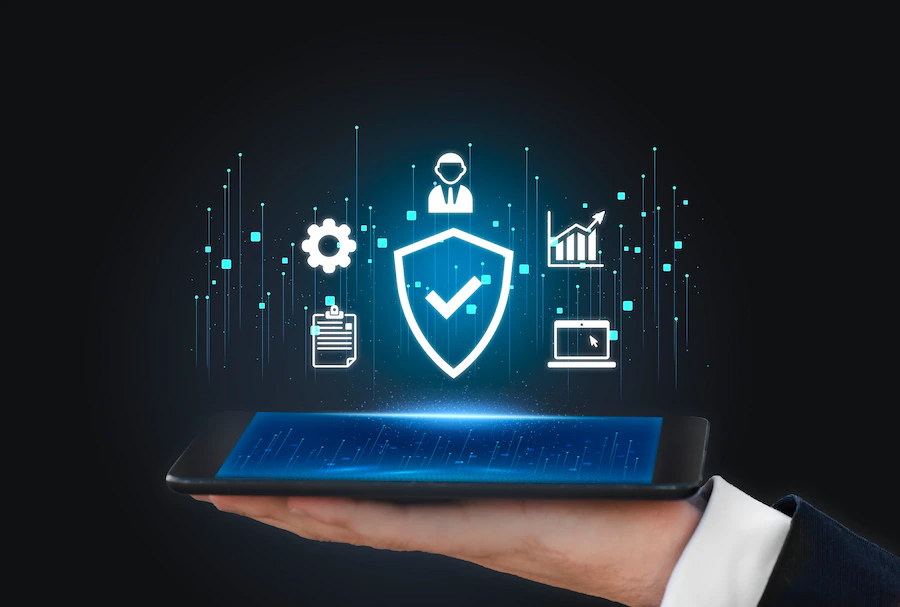Tips To Improve Your Brands Cyber Security
5 Mins Read
Published on: 28 August 2023
Last Updated on: 12 September 2023

toc impalement
In the digital age, where information flows seamlessly across networks, protecting your brand’s online presence and sensitive data has become paramount. Cybersecurity is no longer a concern solely for large corporations; small businesses and startups are equally vulnerable to cyber threats. A single breach can lead to financial loss, reputational damage, and legal consequences.
Enrolling in a Cyber Security Program is a pivotal step for enhancing your brand’s cybersecurity posture. By gaining insights into the latest threats, best practices, and risk management strategies, you empower your team to proactively safeguard sensitive information and digital assets. This investment not only bolsters your brand’s protection but also establishes a reputation for resilience and responsible digital practices in an increasingly interconnected business landscape.
To safeguard your brand and its digital assets, follow these 10 essential tips to enhance your cybersecurity measures.
1. Raise Employee Awareness:
![]()
Central to a robust cybersecurity strategy is your team’s involvement. Initiate a consistent regimen of training sessions to enlighten employees about the perils posed by phishing, malware, and social engineering attacks. These sessions underscore the significance of their role in fortifying the organization’s digital defenses.
By arming them with knowledge, employees become vigilant allies in thwarting potential threats. Advocate for the adoption of strong, distinctive passwords that defy easy deciphering. Encourage their proactive participation in identifying and reporting suspicious activities that might indicate a breach attempt.
A team well-versed in cybersecurity intricacies becomes your inaugural barrier against cyber adversaries. Their ability to discern and neutralize threats contributes significantly to a resilient digital environment. Regular refresher sessions and engaging educational materials foster an ongoing culture of security consciousness, transforming your workforce into a united front against cyber threats.
2. Implement Strong Access Controls:
Crafting a formidable cybersecurity fortress necessitates the meticulous deployment of strong access controls. Shield sensitive information by allocating access solely to individuals integral to specific roles. This approach minimizes the risk of unauthorized exposure and underscores the principle of least privilege.
Enhancing this safeguard is the integration of multi-factor authentication (MFA). By demanding multiple forms of identity verification, MFA erects an additional barricade against malicious infiltrators. Passwords alone no longer grant entry; a unique combination of factors – such as biometrics, tokens, or device recognition – is required, significantly reducing the likelihood of unauthorized access.
Vigilance is maintained through a rigorous regimen of access reviews. Regularly scrutinize permissions to confirm they remain aligned with the principle of least privilege. Timely and strategically removing access rights for employees no longer necessitating them is crucial. This proactive measure mitigates the risk of dormant accounts becoming conduits for cyber threats.
3. Keep Software Up-To-Date:
![]()
In the intricate tapestry of cybersecurity, the thread of software updates weaves a shield of paramount importance. The perils of neglecting software updates are manifold, as outdated software morphs into an enticing entry point for cyber assailants. A proactive approach to maintaining software currency is imperative to bolster your digital bulwark.
Operating systems, applications, and security patches constitute the triad that requires unswerving attention. Routinely updating these components is akin to fortifying the walls of your digital citadel against known vulnerabilities. Each update is a patch that rectifies weaknesses previously exploited by hackers.
Consider harnessing the power of automation by enabling automatic updates wherever feasible. This dynamic measure ensures that your systems remain fortified even in the face of busy schedules or unforeseen lapses in manual updates. Automating this process preserves the integrity of your security posture, safeguarding you against potential attacks arising from unpatched vulnerabilities.
4. Secure Your Network:
Use firewalls, intrusion detection, and intrusion prevention systems to protect your network from unauthorized access. Consider implementing a Virtual Private Network (VPN) for remote employees to ensure secure data transmission.
5. Regular Data Backups:
Frequent data backups are crucial in case of a cyber incident. Use both onsite and offsite backups and ensure they are encrypted. Regularly test the restoration process to verify that your backups are functional.
6. Strong Encryption Practices:
Encrypt sensitive data both in transit and at rest. Utilize encryption protocols for emails, file storage, and sensitive transactions. This makes it incredibly difficult for unauthorized parties to access the information even if they manage to breach your defenses.
7. Conduct Vulnerability Assessments:
Regularly perform vulnerability assessments and penetration testing on your systems. This helps you identify potential weaknesses before attackers do and gives you a chance to patch or mitigate them proactively.
8. Develop An Incident Response Plan:
Despite all precautions, breaches can occur. Having a well-defined incident response plan ensures that your team knows how to respond effectively in the event of a cyber incident. This minimizes the damage and helps with a swift recovery.
9. Partner With Reliable Vendors:
Navigating the cyber realm requires not only safeguarding your internal infrastructure but also extending your vigilance to the partners and vendors you collaborate with. If your brand’s operations are intertwined with third-party vendors or cloud services, their cybersecurity practices become an extension of your own.
The journey towards a secure collaborative ecosystem commences with thorough due diligence. Scrutinize potential partners to ensure they align with your cybersecurity standards. Assess the measures they’ve implemented to fortify their digital defenses and ascertain their compliance with industry benchmarks and regulations. This meticulous evaluation serves as a preventative measure, minimizing the risk of an adversary exploiting a weak link in the chain.
10. Foster A Culture Of Security:
Cybersecurity is everyone’s responsibility. Encourage your team to report any suspicious activities promptly and reward good security practices. When security becomes an integral part of your company culture, the overall risk decreases significantly. A Data Science Course video is a necessity if you are looking forward to grow in this industry!
In conclusion, prioritizing cybersecurity is no longer optional; it’s a fundamental aspect of managing a brand in the digital era. By following these 10 essential tips, you can significantly enhance your brand’s cybersecurity posture and reduce the risk of falling victim to cyber threats. Remember, cybersecurity is an ongoing process that requires vigilance and adaptation to new challenges. Stay informed about the latest cybersecurity trends and best practices to keep your brand and its digital assets safe from harm.
Read Also:


















Comments Are Closed For This Article